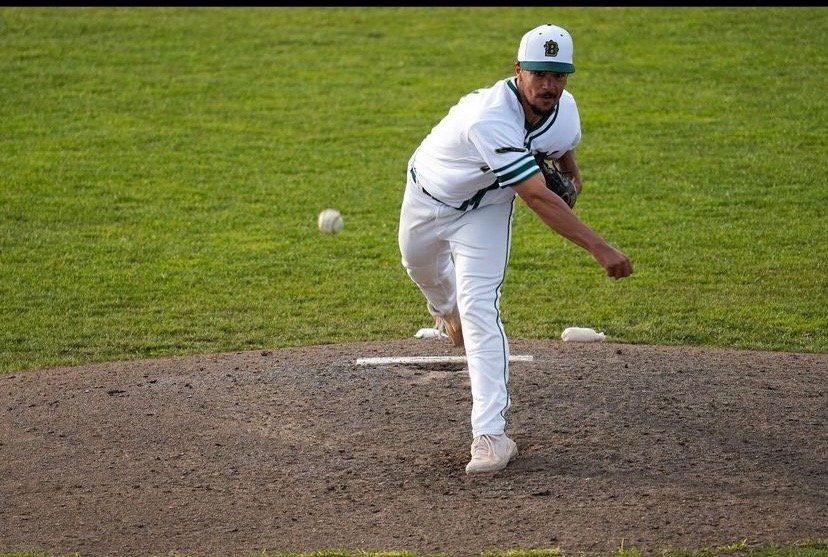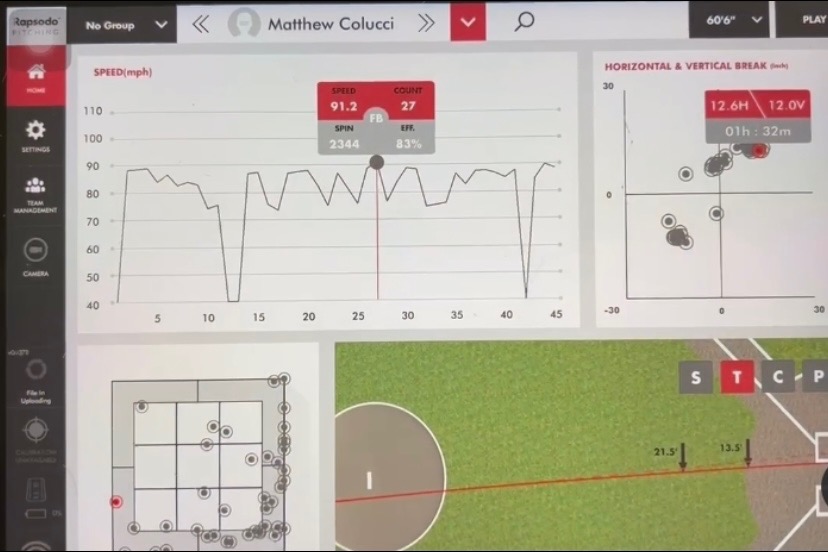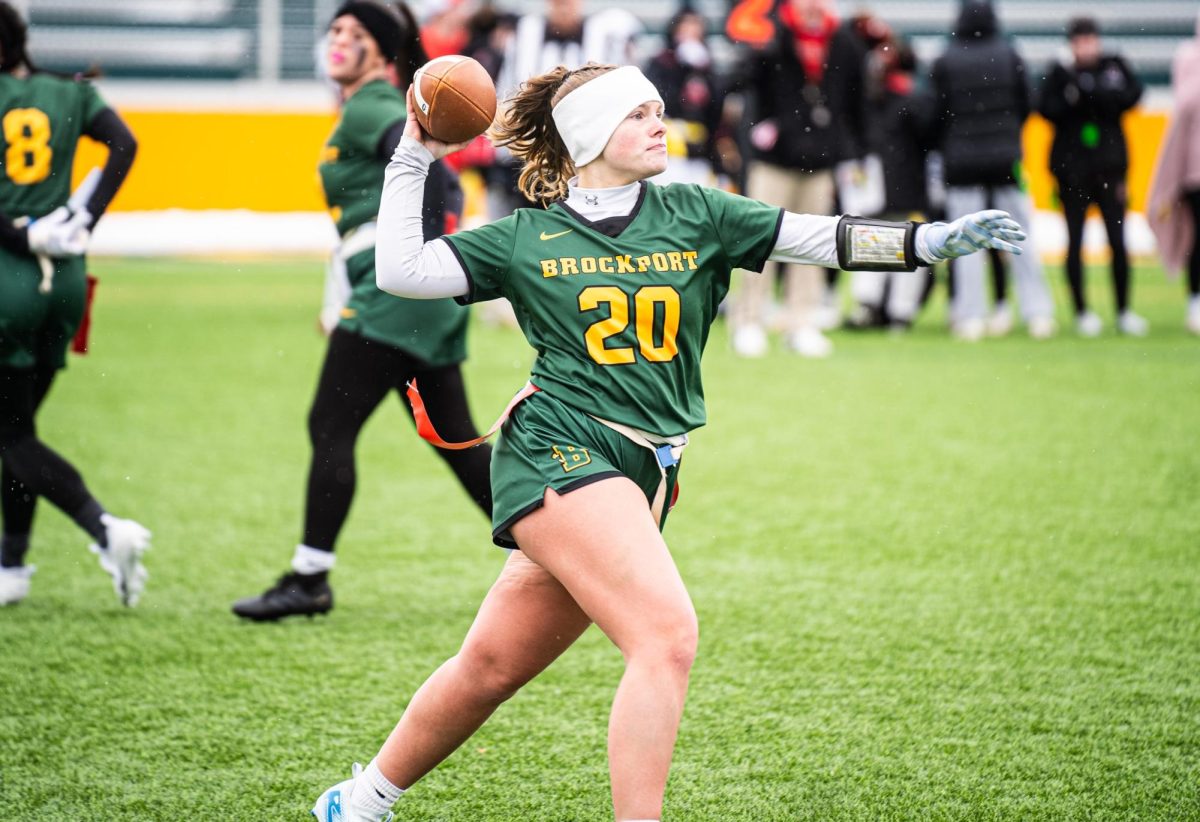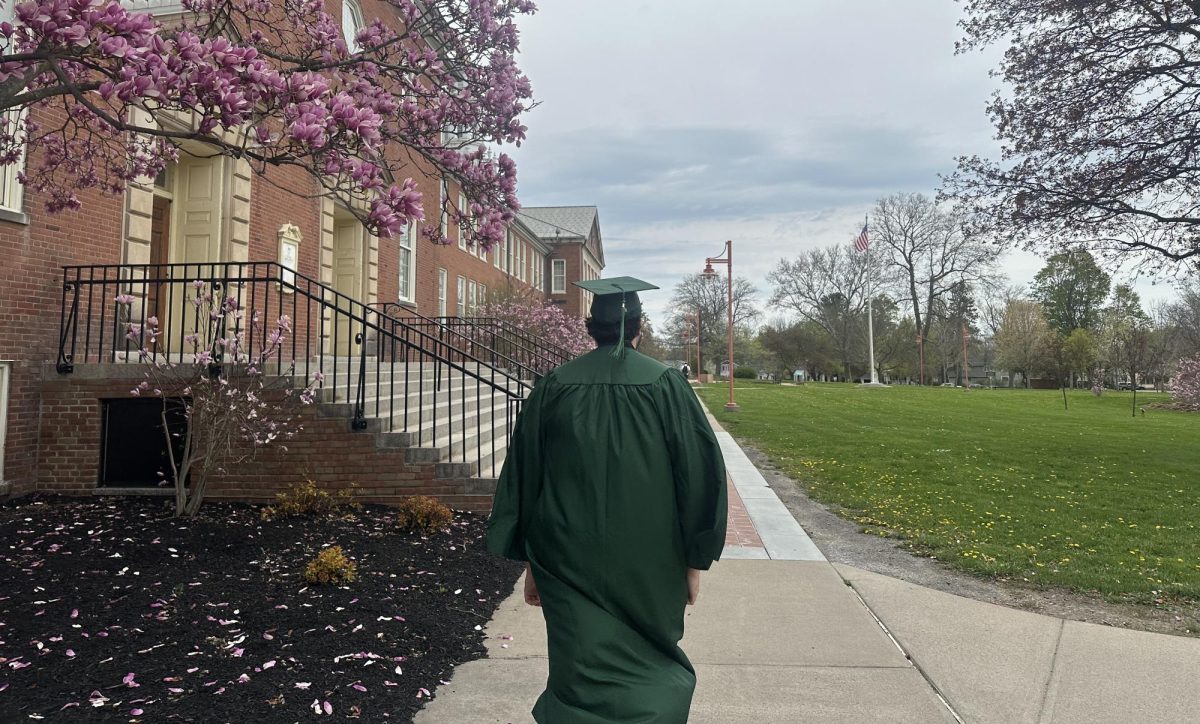The pitcher stands 60 feet, six inches away from the catcher. He gets his sign and delivers the pitch. The game seems simple from an outside view. Get the sign, pitch, and catch. But there’s much more to it. In fact, there’s a large amount of science involved in mastering the art of pitching.
The Brockport baseball team has incorporated that science into their pitching staff. With the assistance of technologies like Rapsodo and Trackman, Brockport pitchers are able to analyze their spin rate, spin efficiency, and velocity. With data being received almost instantly, players can learn from pitch to pitch what areas of their game need improvement.
Graduate assistant and pitching coach Kyle Canavally has been instrumental in incorporating analytical data into on field success.
“Our staff has been using technology like Rapsodo for the past few seasons. It’s been a huge help for us. It has allowed our pitchers to get the most out of their stuff. Fastballs are thrown harder and curveballs and sliders spin more efficiently. It’s a great tool,” Canavally said.

Not only has the implementation of technology allowed pitchers to throw harder, but command of pitches has increased as well, allowing pitchers to trust all of their pitches and be more consistent. That consistency has shown on the mound so far this season.
The pitching staff has combined for a 21-4 record, a 2.99 earned run average (ERA), a 1.17 walks and hits per inning pitched (WHIP), 235 strikeouts, 60 walks, 68 earned runs, and held opponents to a .230 batting average over 205 innings. The staff’s strikeout to walk ratio currently sits at 3.92:1.
These statistics are the product of learning from every pitch. When the team began its preseason work in early fall, Rapsodo devices were placed on the ground between the mound and home plate. By being able to measure accurately what’s working and what isn’t, pitchers don’t have to rely on feel or the eye test to improve their stuff.

Success isn’t reliant solely on technology, though. It takes a knowledgeable coaching staff to be able to apply the necessary changes. Canavally pitched for the Golden Eagles during his junior and senior seasons, so he has that experience required for the job.
“Pitchers are always toying with their stuff,” Canavally said. “I used to change the grips on my off speed stuff all the time. If it wasn’t working one way, I’d try another. But having actual data to reinforce what we’re seeing is even more beneficial. And it’s paid dividends,” Canavally said.
If a curveball is spinning loosely, hanging up in the zone, or not breaking as much as it should, pitchers can refer to Rapsodo to learn why that’s the case. The solution may be a mechanical issue or it could lie in the pitch grip itself. The technology is able to tell the pitcher that the spin rate and spin efficiency is lower than it should be, suggesting them to make a change.

The same can apply to the fastball. Many think that if the pitcher just throws the ball as hard as they can, they’ll be successful. But that’s not always the case. Rather than potentially injuring one’s arm by exerting more force, the pitcher can try to put more spin on the ball, which will result in more velocity.
Senior pitcher Matt McGowan has been able to use this technology to give him a jump in velocity.
“I was able to add about three or four extra miles an hour on my fastball and my slider is a lot more tight now. Being able to have my fastball and slider come out of the same tunnel has allowed me to be a lot more successful as a pitcher, and a lot of the changes I made came from the resources here and the coaching staff around me,” McGowan said.
So the next time you see a Brockport pitcher peer into the catcher for the sign, just remember all the work that was put in to get them to that point.






















